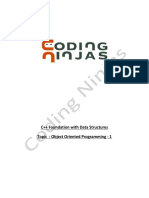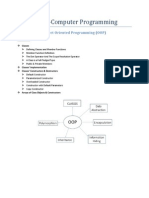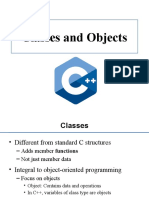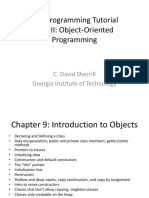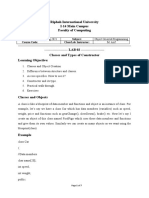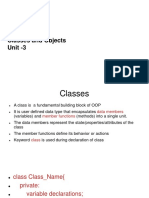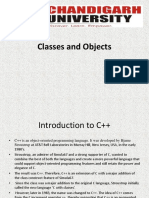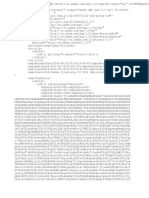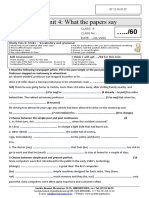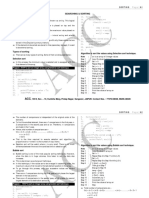0% found this document useful (0 votes)
138 views22 pages12 Classes and Objects
The code defines a tollBooth class to model a tollbooth that tracks the number of cars passing through and the total money collected. The class contains data members for the total cars and total cash, with constructor to initialize them to 0. Member functions payingCar() and nopayCar() increment the car count, with payingCar() also adding $0.50 to the cash total. A display() function outputs the totals. A test program allows the user to count paying and non-paying cars with keys and prints the final totals on exit.
Uploaded by
Sanya SharmaCopyright
© © All Rights Reserved
We take content rights seriously. If you suspect this is your content, claim it here.
Available Formats
Download as PPTX, PDF, TXT or read online on Scribd
0% found this document useful (0 votes)
138 views22 pages12 Classes and Objects
The code defines a tollBooth class to model a tollbooth that tracks the number of cars passing through and the total money collected. The class contains data members for the total cars and total cash, with constructor to initialize them to 0. Member functions payingCar() and nopayCar() increment the car count, with payingCar() also adding $0.50 to the cash total. A display() function outputs the totals. A test program allows the user to count paying and non-paying cars with keys and prints the final totals on exit.
Uploaded by
Sanya SharmaCopyright
© © All Rights Reserved
We take content rights seriously. If you suspect this is your content, claim it here.
Available Formats
Download as PPTX, PDF, TXT or read online on Scribd
/ 22
